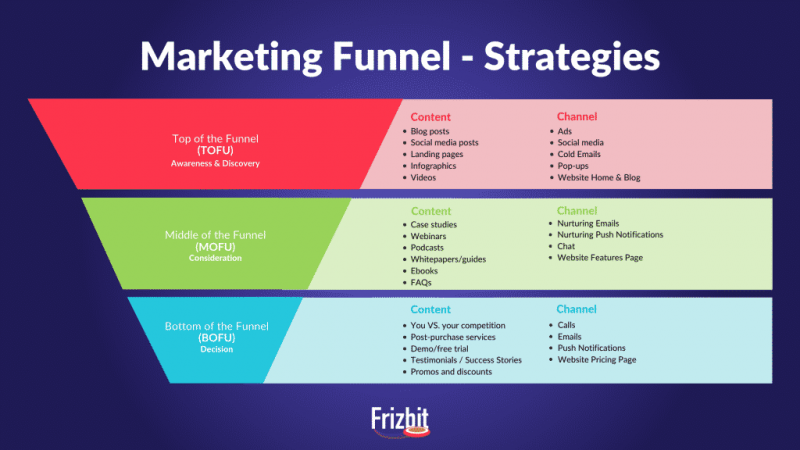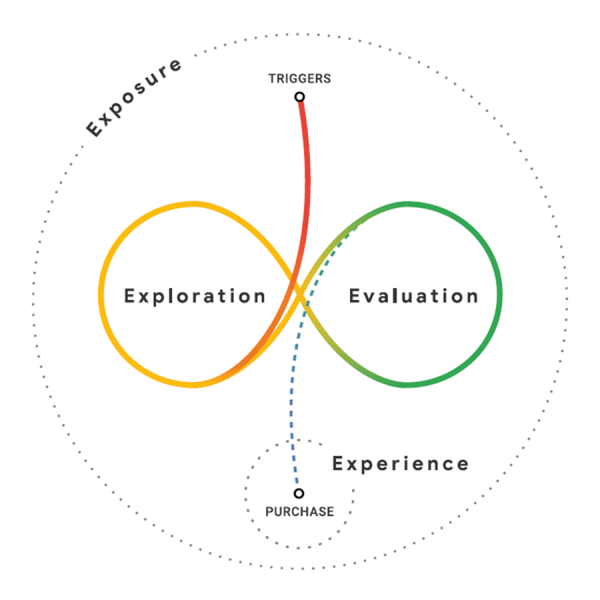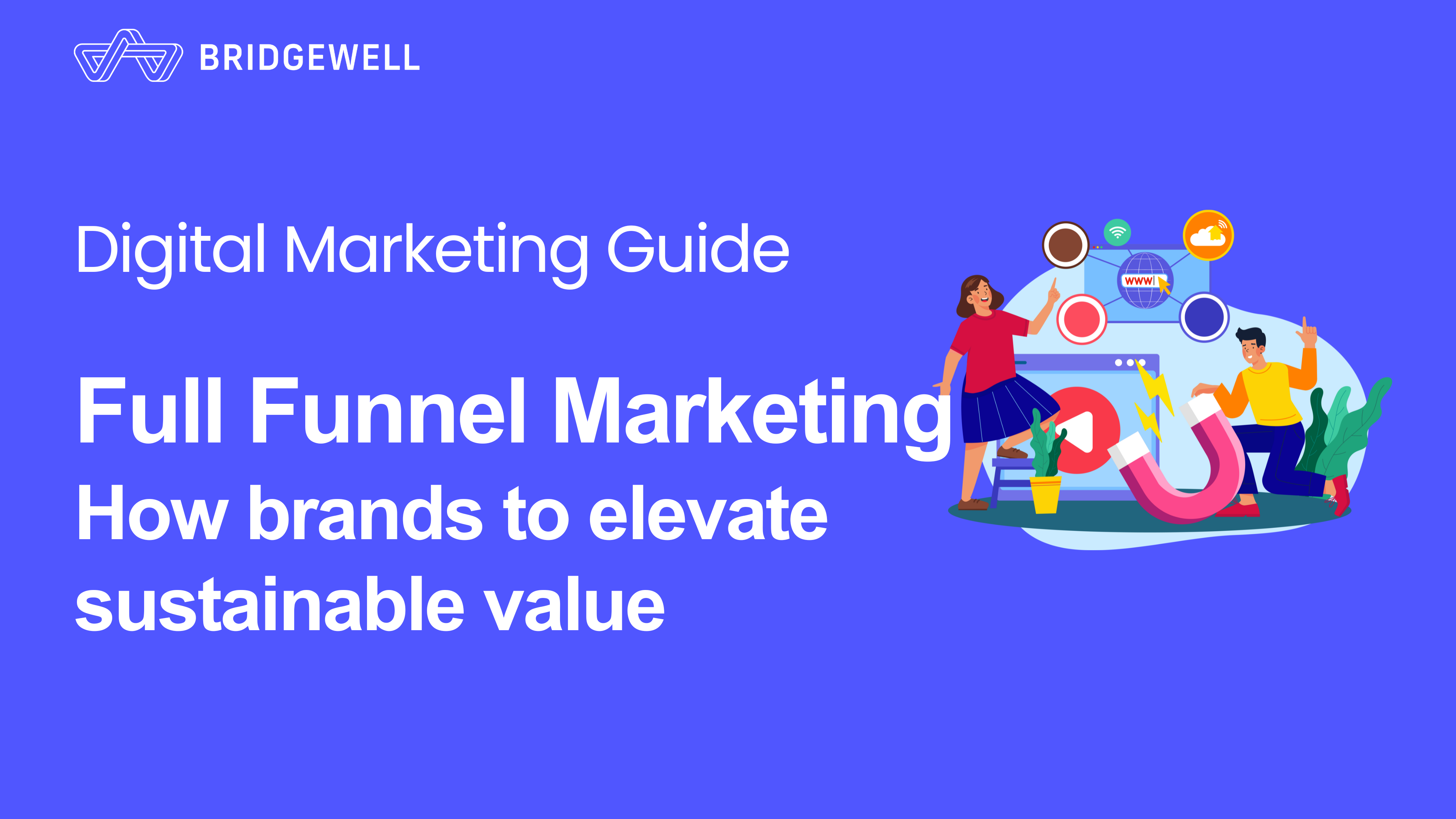A well-planned full-funnel marketing strategy is the key to future brand growth, as it addresses diverse advertising needs across the customer journey.
[2025 Update] The Ultimate Full-Funnel Marketing Strategy: How Brands Can Maximize Ad ROI
–
Running successful brand ads sounds simple—but in reality, it’s anything but easy.
Many assume marketing is straightforward, but achieving high-performing campaigns requires more than just execution—it demands data analysis and strategic adjustments. One common mistake in media buying is relying too heavily on a single approach and resisting change.
“If this method works, why change it?” While this mindset might bring decent results, it often prevents brands from unlocking greater growth potential.
This can lead to two major issues:
- Wasted ad spend on ineffective placements.
- Missed revenue opportunities by not exploring better-performing strategies.
So here’s the big question: With so many opportunities in the market, why limit yourself? If adjusting your strategy can drive better results, why not test it?
–
What Is Full-Funnel Marketing? Why It’s a Must-Know Strategy in 2025

–
Full-funnel marketing is a strategy that covers the entire customer journey—from brand awareness to customer loyalty. Instead of focusing on just one stage, this approach ensures a seamless and consistent experience across multiple channels and touchpoints.
This strategy helps brands:
- Increase brand awareness
- Generate high-quality leads
- Improve conversion rates
- Build long-term customer relationships
However, to maximize its effectiveness, full-funnel marketing requires continuous optimization and adjustment.
According to HubSpot, 91% of marketers feel at least somewhat confident that their marketing investments contribute to revenue growth. But just because a strategy drives results doesn’t mean a brand is reaching its full potential.
Full-funnel marketing isn’t a one-time project—it’s an ongoing process of evaluation and improvement. By adopting this approach, brands can build a more efficient, scalable, and high-performing marketing system that fuels long-term business growth.
–
Full-Funnel Marketing vs. Single-Platform Marketing: Which Strategy Delivers Better Results?
One of the most common mistakes marketers make is failing to expand their marketing channels, leaving gaps in the customer journey. While focusing on a single platform may seem like a “stable” strategy, it often traps brands in a comfort zone, limiting their growth potential.
When brands rely solely on a single channel, marketing budgets become “locked in,” forcing them to compete for consumer attention within the same ad placements as their competitors—rather than driving real brand growth.
Small and Medium Businesses Often Lack Budget Flexibility
Many advertisers hesitate to increase their budgets for broader reach, choosing instead to stick to a single platform, such as only running social media ads. However, the reality is that target audiences engage across multiple touchpoints. Leveraging multiple channels not only helps brands reach more potential customers but also optimizes Customer Acquisition Cost (CAC). With proper budget allocation, brands can maximize efficiency and impact.
Expanding marketing channels does not dilute existing performance; instead, the right question to ask is:
“If a channel is already delivering results, why not scale it further?”
It’s important to note that full-funnel marketing doesn’t mean abandoning current strategies—it means integrating them into a more complete customer journey. The marketing tactics you’re using today may already cover part of the funnel. With strategic adjustments, you can build a more competitive and well-rounded marketing approach that drives long-term success.
–
Why Full-Funnel Marketing Is Essential in 2025
In recent years, the marketing industry has fully recognized the power of a holistic marketing strategy—leveraging multiple ad placements and touchpoints to engage consumers at different stages, rather than relying on a single tactic.
At global industry events, trade shows, and marketing summits, brand and agency representatives frequently discuss similar marketing challenges. One of the most common roadblocks is that when an existing ad strategy—such as traffic generation—hits its ceiling, brands struggle to scale further. Whether the goal is to boost brand awareness, improve conversion rates, or maintain a loyal customer base, this challenge is all too familiar for marketers.
But here’s the real question: Have you explored multi-channel integration, or are you just sticking to what’s familiar?
This applies not only to brands that rely on paid advertising but also to those focusing on organic growth through SEO and content marketing. While organic reach can be effective, it is not the only solution. Paid advertising unlocks new growth opportunities, and regardless of your current strategy, expanding into a broader marketing funnel can significantly enhance overall performance.
–
Advantages of Full-Funnel Marketing Strategy
- Consistent Customer Experience – Ensures brand messaging remains cohesive across different platforms and touchpoints.
- Omnichannel Exposure – Expands visibility by leveraging multiple channels, increasing reach among potential customers.
- New Audience Expansion – Moves beyond existing traffic sources to tap into new market opportunities.
- Long-Term Impact – Engages all users interested in the brand, not just those at the bottom of the funnel.
- Brand Safety – Ensures ads appear in reputable placements, protecting brand reputation.
- Optimized Marketing Budget – Allocates resources to the most effective channels based on different sales stages.
- Customer Journey Insights – Uses data analytics to understand consumer behavior at various buying stages, refining marketing strategies.
- Increased Sales & Conversions – Generates new revenue opportunities through expanded acquisition channels.
- Shortened Purchase Decision Cycle – Captures consumer attention before competitors, improving conversion rates.
–
The New Era of Consumer Journeys: Understanding the “Messy Middle” Phenomenon
Online shopping behavior has evolved dramatically, making full-funnel marketing more critical than ever. As digital touchpoints multiply, consumer attention to ads and marketing messages has decreased, making brand visibility increasingly challenging.
In the past, the path from purchase intent to checkout was relatively linear and straightforward. Today, however, the consideration phase has become longer and more complex. Consumers now spend more time reading reviews, comparing products, seeking recommendations, and waiting for discounts—frequently switching between different shopping channels before making a decision.
This shift has made brand exposure more fragmented and harder to control. The key challenge for marketers is identifying the most effective touchpoints to engage consumers at the right time and place, influencing their purchase decisions.
While predicting every step of the consumer journey is nearly impossible, brands can focus on:
- Identifying high-value marketing channels that attract the most qualified customers.
- Analyzing performance data to refine targeting strategies.
- Using insights to strengthen brand positioning and ultimately drive higher sales and revenue.
–
Customer Journey Mapping: The Modern Buying Process

The concept of the “Messy Middle” perfectly captures the complexity of today’s consumer journey. Google’s Alistair Rennie and Jonny Protheroe highlighted this phenomenon back in 2020:
“We know that the path from purchase motivation to final decision is not linear. Consumers navigate a complex web of touchpoints, which vary from person to person. The real challenge is understanding how they process this information and make choices.”
The Messy Middle is essentially a dynamic mix of motivations and interactions, where no two consumer journeys are exactly alike. There is no single, predictable pattern.
For marketers, mastering this complexity means strategically engaging consumers across multiple channels and at the right moments. By doing so, brands can better address consumer needs, optimize marketing performance, and drive higher revenue growth.
–
Data-Driven Marketing: How to Leverage Retail Media for Better Ad Performance
Now that we understand why full-funnel marketing is the most effective strategy—regardless of your target audience—it’s time to explore how to maximize online marketing opportunities and drive better results.
One key concept that has become essential for brands is Retail Media. If you’re already familiar with this term, you might have an idea of where we’re heading. If not, it’s time to dive into this rapidly growing trend that is becoming a must-have strategy for brands.
Retail media refers to advertising placements within online retailers and shopping platforms, allowing brands to promote products directly to high-intent consumers. These ads appear on e-commerce websites, shopping apps, and even retailers’ social media channels, helping brands influence purchase decisions at critical moments in the customer journey.
–
2025 Digital Advertising Trends: What Is Retail Media?
From product discovery to checkout, retail media helps brands precisely target high-intent shoppers, making it a powerful tool for full-funnel marketing. Additionally, retail media platforms provide standardized performance metrics such as ROAS, conversion rates, and CPC, enabling brands to measure ad effectiveness and continuously optimize their campaigns.
In other words, the retail media ecosystem allows marketers to leverage consumer shopping behavior data to improve ad precision and conversion rates. This becomes especially valuable during peak shopping seasons—such as Singles’ Day (11.11), Lunar New Year, or major holiday sales—when brands can adjust their ad strategies in real time to maximize budget efficiency and campaign impact.
–
Conclusion
Aligning advertising strategies with the modern sales funnel is no easy task. However, with the advancement of programmatic advertising, brand managers, advertisers, and media buyers can now navigate this approach more efficiently and maximize ad performance.
A well-planned full-funnel marketing strategy is the key to future brand growth, as it addresses diverse advertising needs across the customer journey. By leveraging retail media full-funnel solutions, brands—regardless of industry or target audience—can build a comprehensive and highly effective marketing strategy that sets them apart in a competitive market.

